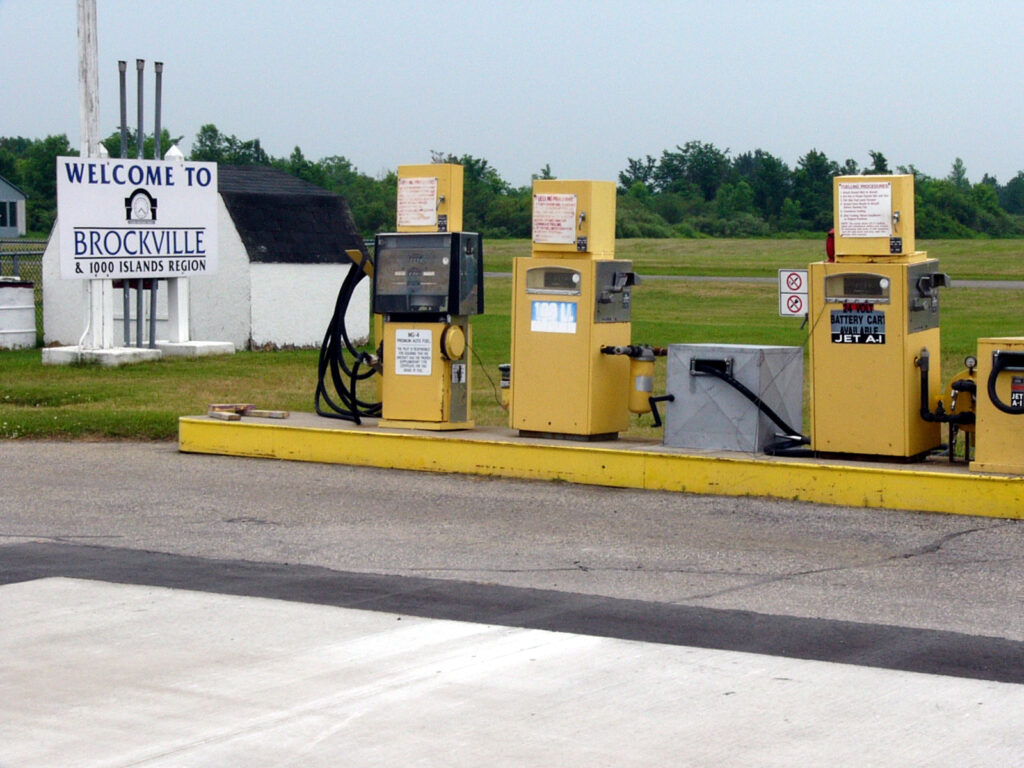February 26, 2024
Aviation Fuel – MOGAS, 100LL, and Beyond
Hanna Abdo

Written by: George Farrington, Director, External Relations
For many pilots, MOGAS or motor gasoline presents a cost effective and easy to come by fuel option. There are even some aircraft engines, such as the Rotax 900 series of engines, where MOGAS is suggested for use over AVGAS (aviation gasoline). Dozens of aircraft engines and hundreds of certified airframes can also apply for a MOGAS Supplemental Type Certificate (STC), which permits the use of MOGAS in that aircraft.
MOGAS STCs have existed since the 80s, and can provide a cost benefit, an easier to access fuel source and potentially reduced maintenance requirements. With a lot of older aircraft piston engines originally designed to operate on fuel octanes lower than current automotive fuel, the STC is usually a paperwork endeavour, with a handy sticker to demonstrate that the aircraft is approved for MOGAS use.
Canada’s Clean Fuel Regulations, which came into effect in July 2023, encourages the use of clean fuels like ethanol to be blended automotive gasoline and some provinces and territories require the addition of 5 to 10% ethanol to gasoline.
Groups are protesting the lack of ethanol free fuel, as current gasoline containing ethanol can have adverse effects on classic cars, small gasoline engines and marine engines. The engines and fuel systems of most modern vehicles are not affected by fuel containing ethanol, however there are many vehicles that are adversely affected by the use of ethanol. The most recent petition to the Government of Canada initiated by an individual on behalf of vintage automobile owners in Canada is requesting ethanol free fuel be available in higher octanes, able to be purchased at automotive fuel stations.
When used in some aircraft, ethanol can degrade certain plastics, fibreglass, rubbers and aluminum that form part of the fuel system of many aircraft, and aircraft accidents have occurred from blocked fuel filters and lines from the degraded tanks and hoses. Additionally, ethanol can absorb a larger amount of water than gasoline can, so any condensation or other water in the fuel tank will be absorbed at a higher rate, with the potential to cause issues with combustion and effect fuel flow.
Ethanol can cause vapour lock, which can cause engine fuel starvation. This is especially prevalent at altitude, and some aviation authorities have prohibited the use of MOGAS above a set altitude, in the case of the UK Light Aircraft Association 6000ft. Additionally, the greater volatility of MOGAS compared to AVGAS means that the carburetor throat temperatures are lowered more by the atomisation of MOGAS at the jet than occurs with AVGAS, which can make a carburetor more susceptible to icing when using MOGAS.
Some engines are approved for a certain percentage of ethanol, some as high as 10%, however for ethanol to be used the fuel system needs to be able to withstand the degrading effects of ethanol, and an aircraft manufacturer will specify the ethanol content that can be used in the aircraft. While some aviation authorities permit the use of some ethanol, mostly only 5%, Transport Canada prohibits the use of any ethanol in aircraft, and most MOGAS STCs are invalidated with the use of ethanol.
The lead found in AVGAS can also cause its own problems, such as fouled spark plugs and sticking valves, which has led some aircraft owners to mix AVGAS with MOGAS in an effort to reduce ongoing maintenance costs.
Lead itself also presents health and environment issues, and in February 2022 the Eliminate Aviation Gas Lead Emissions (or EAGLE) group was set up by general aviation trade associations and the US Federal Aviation Administration (FAA), with the goal of transitioning to lead free fuel by 2030. This was additionally motivated by findings from the US Environmental Protection Agency (EPA), which in October 2023 announced its final determination that emissions of lead from aircraft that operate on leaded fuel cause or contribute to air pollution which may reasonably be anticipated to endanger public health and welfare.
Unleaded aviation fuels such as UL91 are already in use around the world however these are not compatible with all general aviation engines. The aim of EAGLE is to identify a “drop in” high octane replacement for 100LL AVGAS, to allow a seamless transition to the new fuel type. COPA is a contributor to EAGLE meetings, bringing a Canadian GA perspective, and monitors progression in the development of fuel to ensure that its members and the GA community are aware of potential future fuel availability in Canada.
As work is being undertaken to investigate fuel alternatives for traditional piston engines, research is taking place on further alternative propulsion systems for light aircraft. In the short term, Sustainable Aviation Fuels (SAF) are showing promising results after both short tests and trans-Atlantic flights, many electric aircraft are in development with one certified, and hydrogen is being researched as a future aviation fuel source. While gasoline and piston engine technology may be the “hot topic” of today, we are on the cusp of new developments in aviation propulsion.
